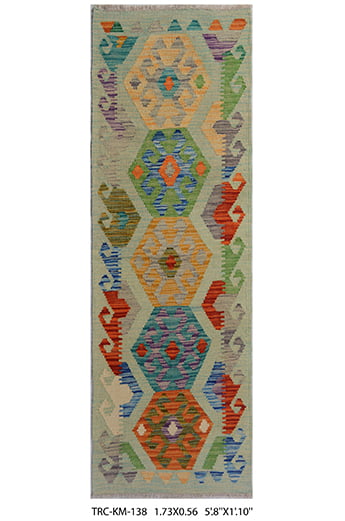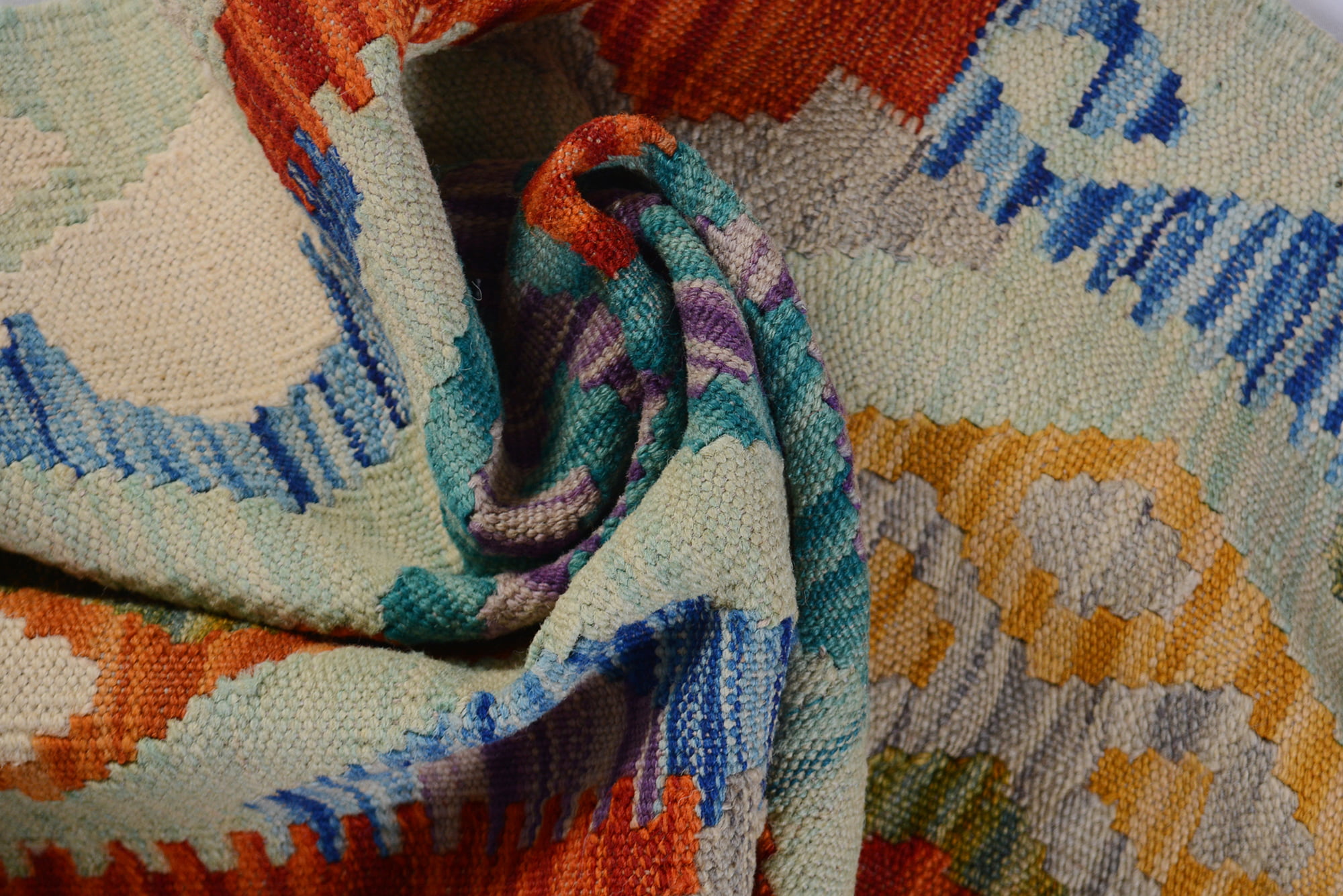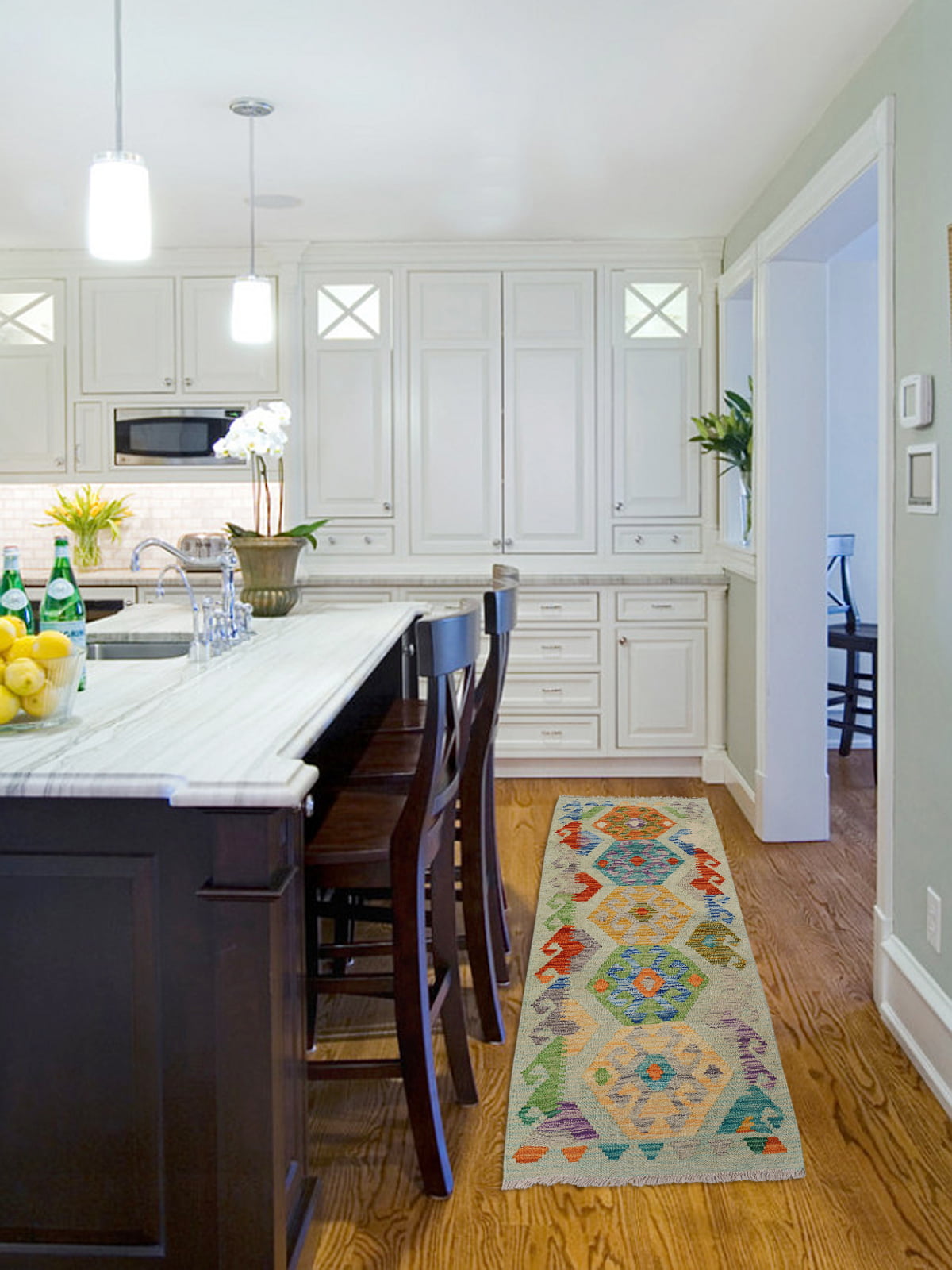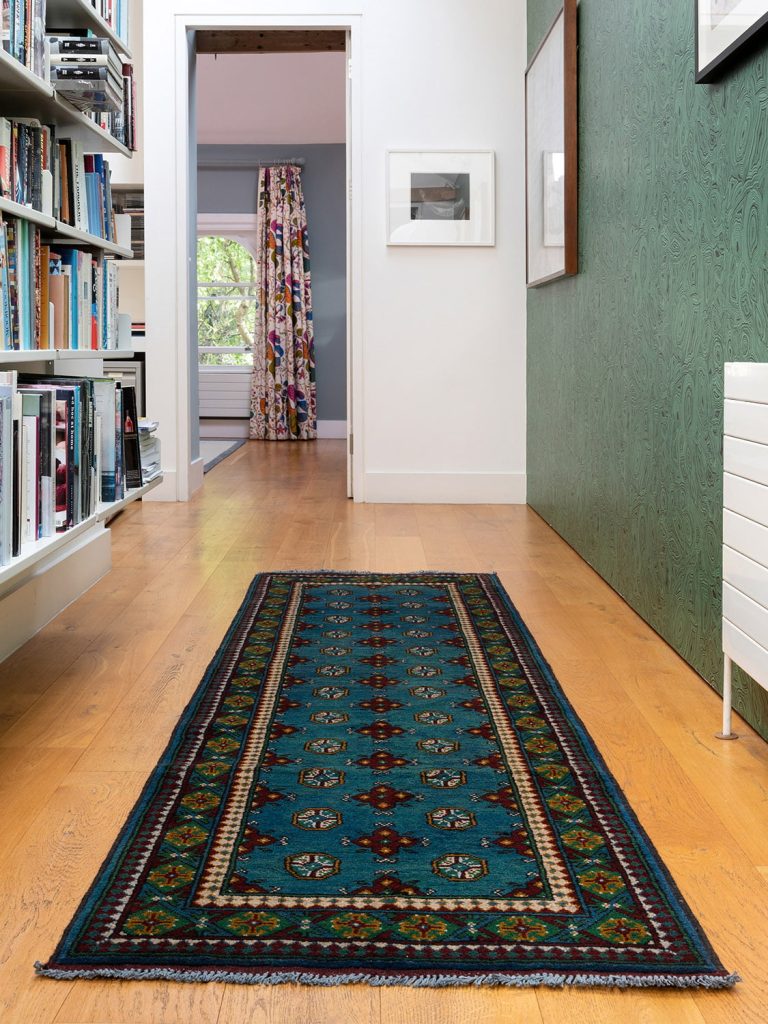Maimana Kilim Chobi 173cm x 56cm / 5’8” x 1’10”
£165.00
1 in stock
Description
Maimana Kilim are completely flat weave portraying bold diagonal geometric shapes, triangles, diamonds and zig-zags. Each different coloured area is woven separately rather than carrying the yarn across the full width of warp strands (as we weave in the UK). This makes the kilim completely reversible. The Maimana kilim is made in ‘Chobi or veg dyed’, Natural undyed, Vintage, Ghalmori and Modern Kilim variations. They are hard wearing and suitable for kitchen diners, corridors, bathrooms, summer houses. These kilims are great as cushions and covering ottomans and other furniture.
Maimana Kilims (Meymaneh/Maymana) are made in Maymana the capitol city of Faryab Province in the Northwestern region of Afghanistan close to the border of Turkmenistan.
Maimana Kilim Chobi/Veg dyed are brightly coloured using local dyes.
Maimana Kilim Vintage created by special request for our customers, these vintage faded kilims are made with local dyed yarns with a special washing and sun-dry process to achieved the gentle naturally faded appearance.
Maimana Kilim Natural are woven using undyed handspun fleece from our sheep. With flocks of sheep ranging in fleece colour from cream, taupes, greys and dark brown and black we have the full range of natural colours at our fingertips without the need for any dying process. Because the yarns are not dyed, these kilim rugs will not fade over time.
Maimana Kilim Ghalmori rug is the original traditional pattern and original colouring of the Maimana kilim. Made by the Uzbek people living in and around the town of Maimana, natural vegetable dyes are used to achieve the combinations of darker browns, blues, black sometimes with a natural cream or beige highlight of an undyed yarn. Ghalmori’s are now rarely found.
Kilim or Kelims are also known as flat weaves because they are created with a technique called ‘weft wrapping’. Afghan kilim rugs range from complete flat weave to combinations of flat weave and pile giving a relief texture. Some are old tribal designs, still being woven just as each tribe’s original ancestors made them.
The methods of kilim weaving has remained unchanged over centuries. The vertical warp threads are fixed and they become the foundation of the kilim. Coloured wool yarns are woven in and out of the warps to produce a design which is invariably geometric in style.
Being so reasonably priced, as well as hard-wearing and sometimes reversible, makes kilims popular for those who appreciate a lively ethnic style and are very good for those on a budget. They also look great as walls hangings.
Afghan Kilims demonstrate a multitude of different hand weave techniques depending on their place of origin. Most but not all types of Kilim are reversible with all being very hard wearing. Our range of kilims include all the Maimana kilims which include Ghalmori, Chobi, Vintage, Natural and Modern. Additionally we have weavers making Mushwani, Barjasta, Qala-e-Now, Adraskan Herat, Soumak and Saghari.
| Origin | Western Afghanistan, Maimana |
| Style | Maimana Kilim |
| Weft | Hand Spun Wool |
| Warp/Fringe | Cotton |
| Knot type | Hand Flat Weave |
| Knot count | Hand Flat Weave |
| Pile depth / Rug thickness | 2mm |



